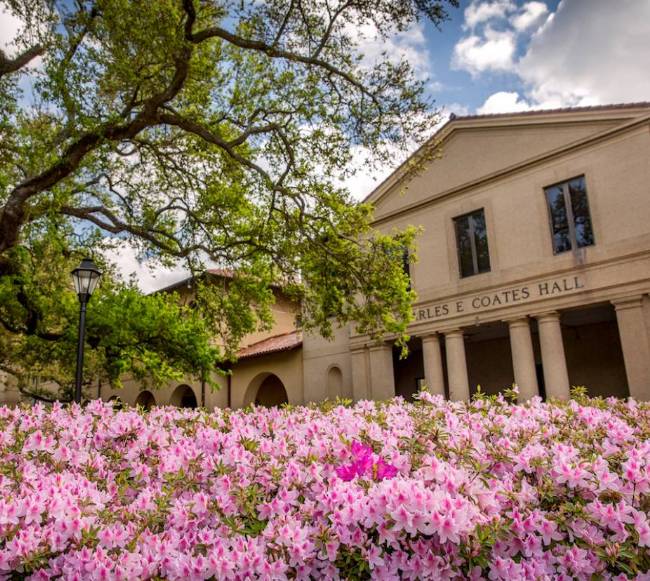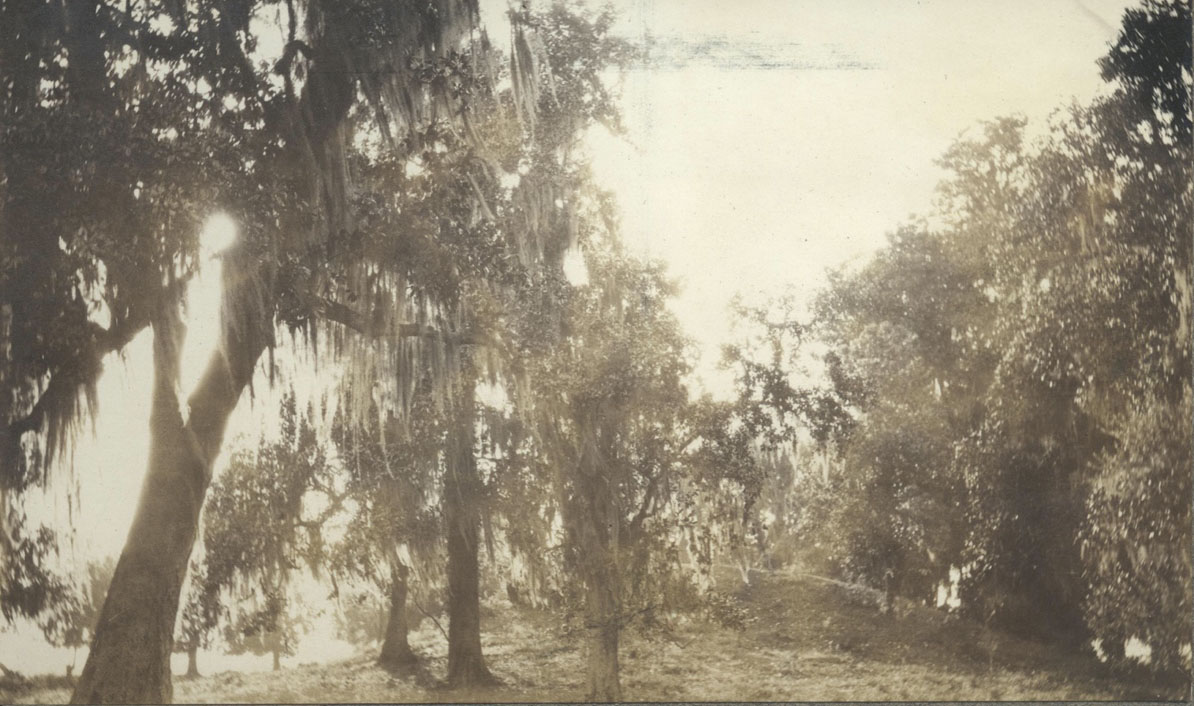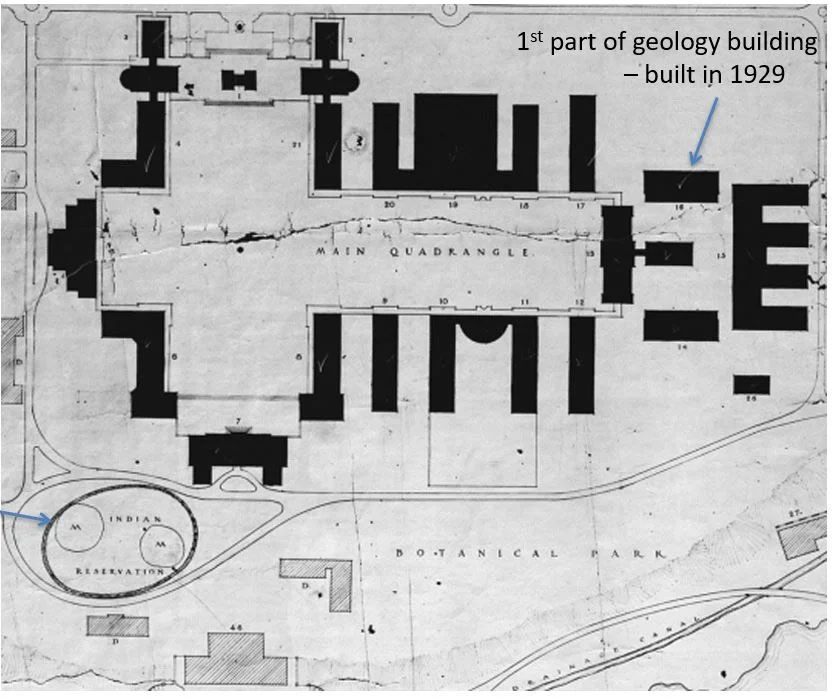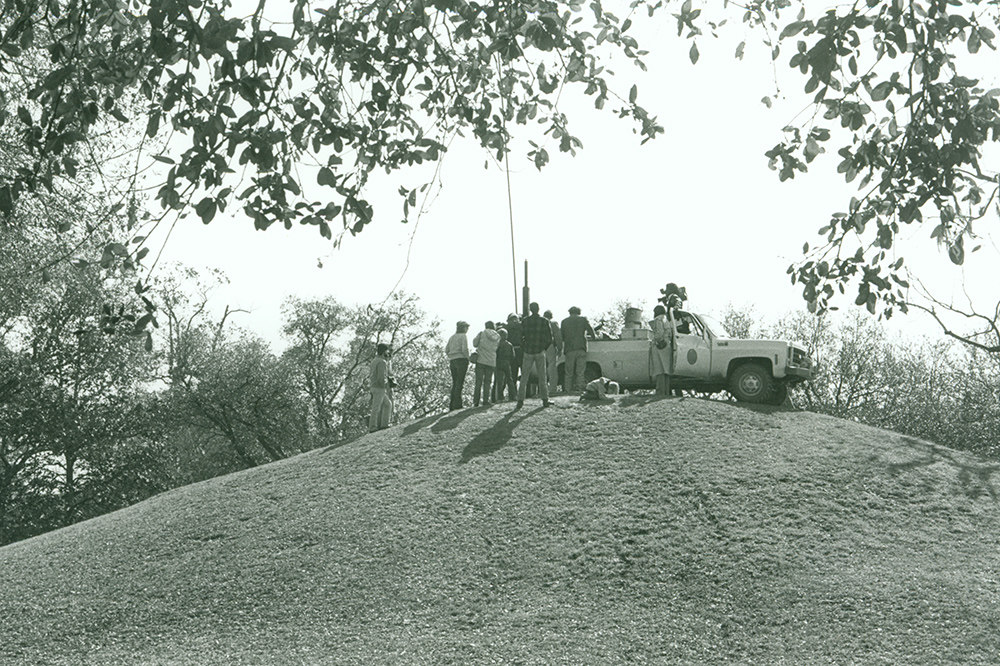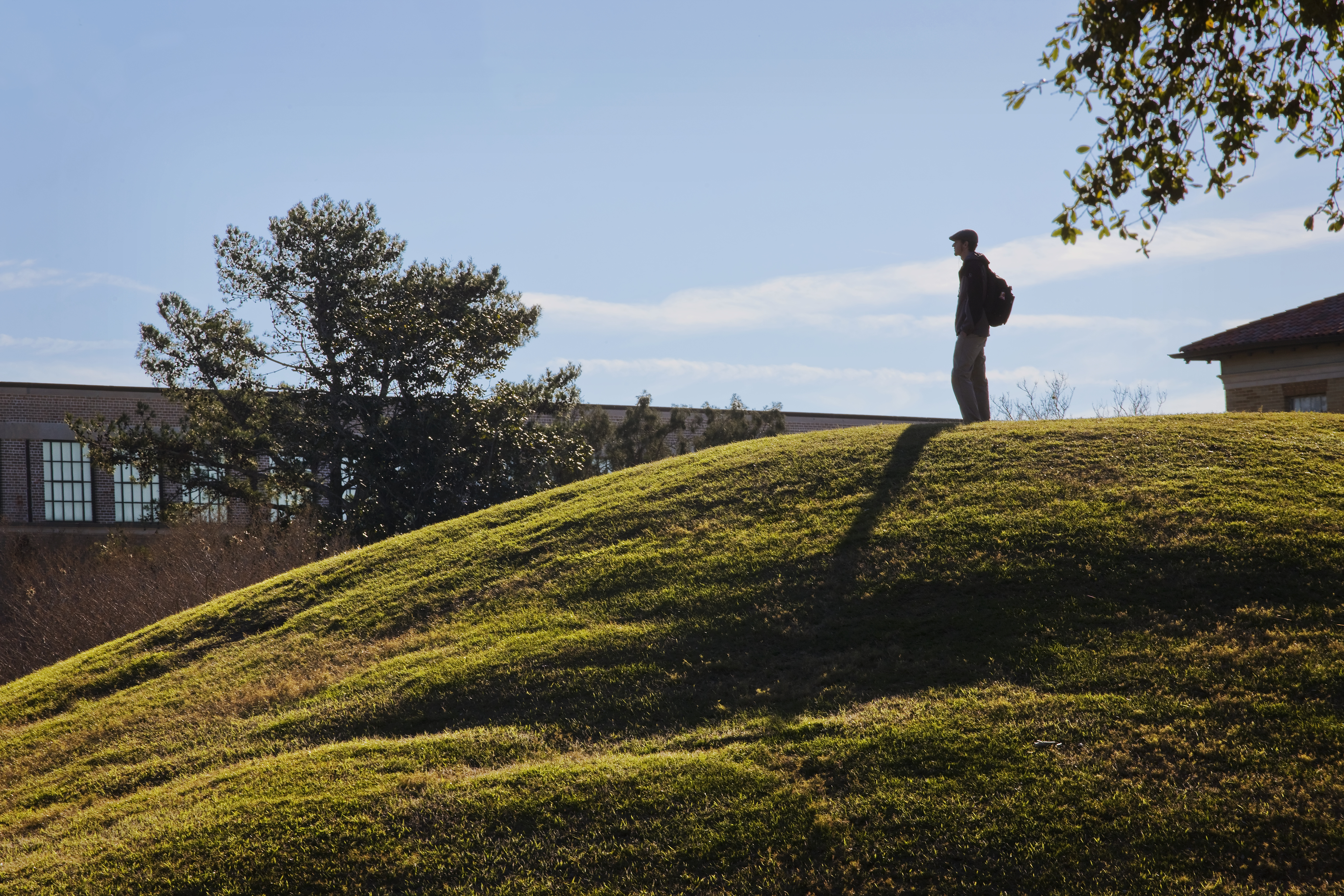LSU Campus Mounds
At the heart of LSU’s campus are two earthen mounds, architectural remnants created by Native Americans thousands of years ago – built by egalitarian hunter-gatherers and a subject of mystery and marvel for generations of admirers.
The LSU Campus Mounds (16EBR6) are now at a crossroads. They are at risk, but thoughtful action, inspired by respect for the past, can preserve these cultural treasures into the future.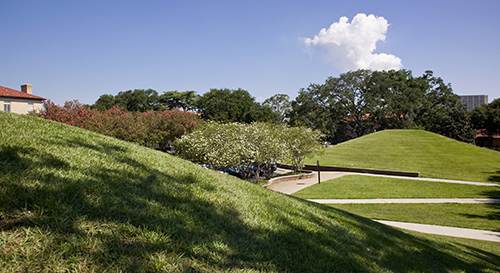
A Complex History
About the Name
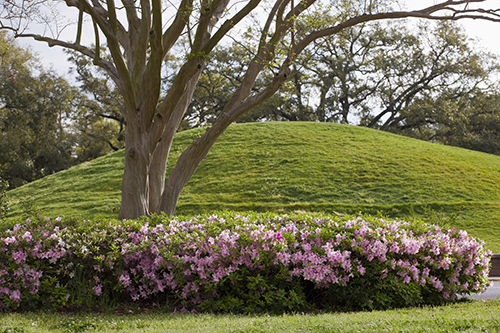
Help us make historical preservation
a point of pride
As the modern steward of this sacred land, LSU takes its responsibility to protect and preserve these cultural treasures seriously. Please help us preserve the LSU Campus Mounds by:
- Learning more about the mounds and their unique value to our campus
- Admiring them from a safe distance, in accordance with posted rules
- Reporting any unauthorized activity that could damage or deface the mounds
- Supporting preservation efforts by making a donation.
- Visit the link below
- In the the “Search for a Fund” field, type in “LSU Campus Mounds”
- Choose the fund in the dropdown list below the search field
The Committee to Preserve the LSU Campus Mounds
The committee's overall goal is to support a plan for permanent protection of the LSU Campus Mounds and to develop a sustainable educational plan.
Priorities include:
- Inform LSU and the greater community about the historical, cultural, and geological significance of the mounds
- Develop clear guidance on how to respect and protect the mounds
- Communicate the opportunity and benefits of funding for this initiative
“The LSU Campus Mounds are probably the best protected mounds because they are on the campus of LSU and LSU has made a very strong commitment to preserving them. Most of the other mounds are on private land and landowners can do what they’d like with them.”
Chip McGimsey, Louisiana State Archaeologist
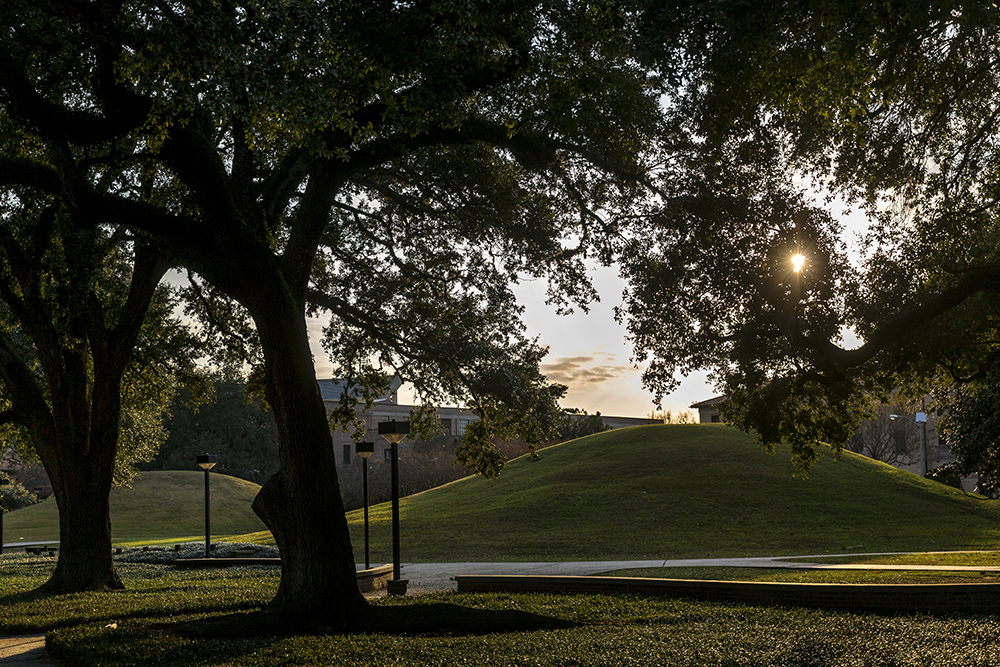
A Time for Action
The LSU Campus Mounds represented a sacred and ceremonial place for the Native Americans who built them and continue to be recognized as such by people today. The mounds have been part of LSU’s identity since the university moved from a site north of downtown Baton Rouge to its current campus in the 1920s, when they were immediately recognized as something special. The LSU site is one of the few locations in Louisiana where visitors and tourists can visit and see Native American mounds, and they are the oldest mounds in Louisiana that are publicly accessible.
For all of these reasons, researchers have long sought, with varying levels of success,
to protect the mounds from deterioration from both the elements and from people walking,
sitting, sliding, and biking on them. LSU has responded with vehicle barriers, signage,
temporary fencing, and game-day rules to discourage the public from potentially damaging
the mounds further.
But years of activity on the mounds have left wear and tear, including visible deformation
on one mound. And the growth of trees on the mounds and their subsequent decay have
contributed to increased water flow into the mounds, as well as scarring from erosion.
There are also concerns about vibrations from traffic passing nearby.
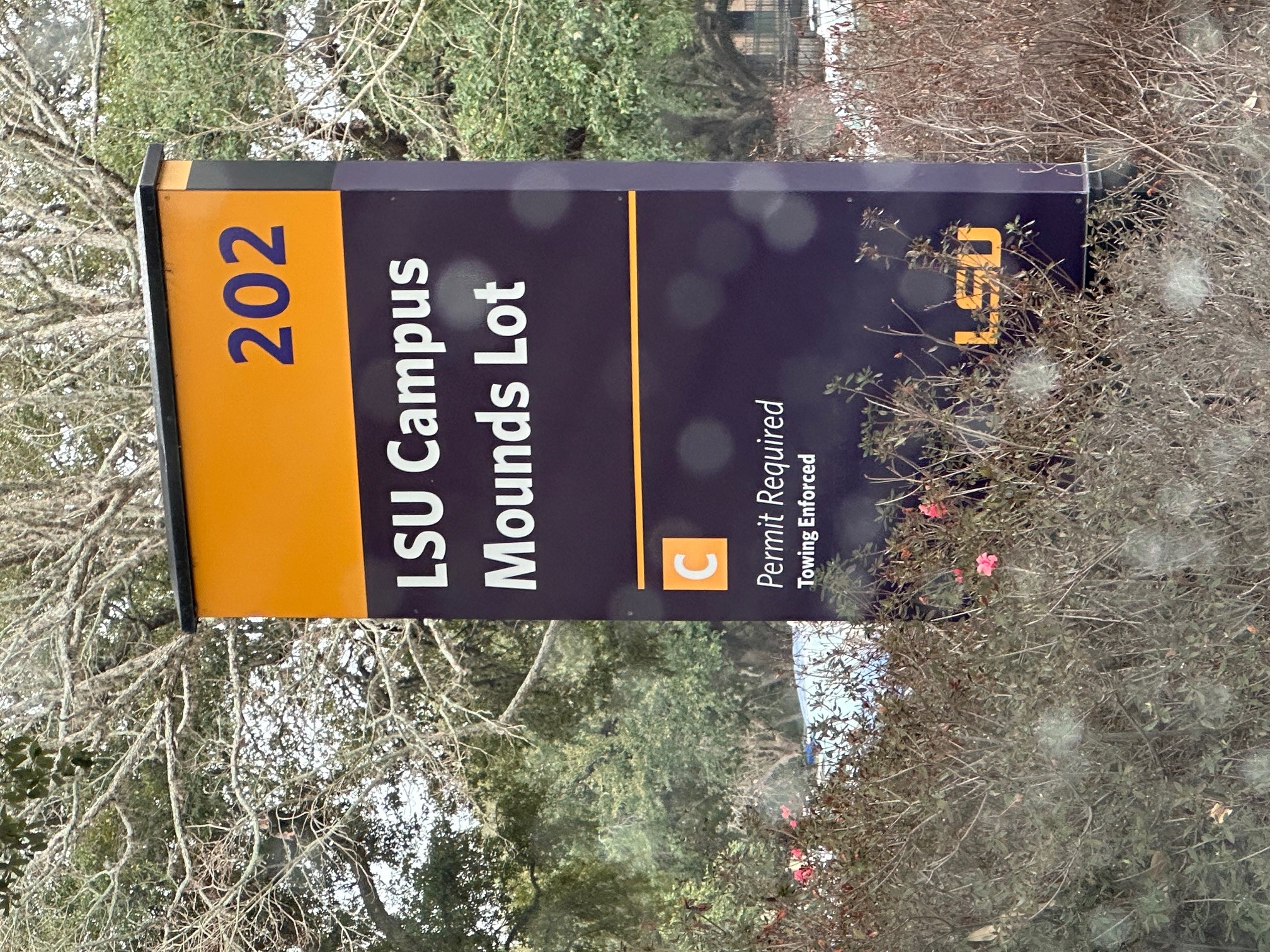
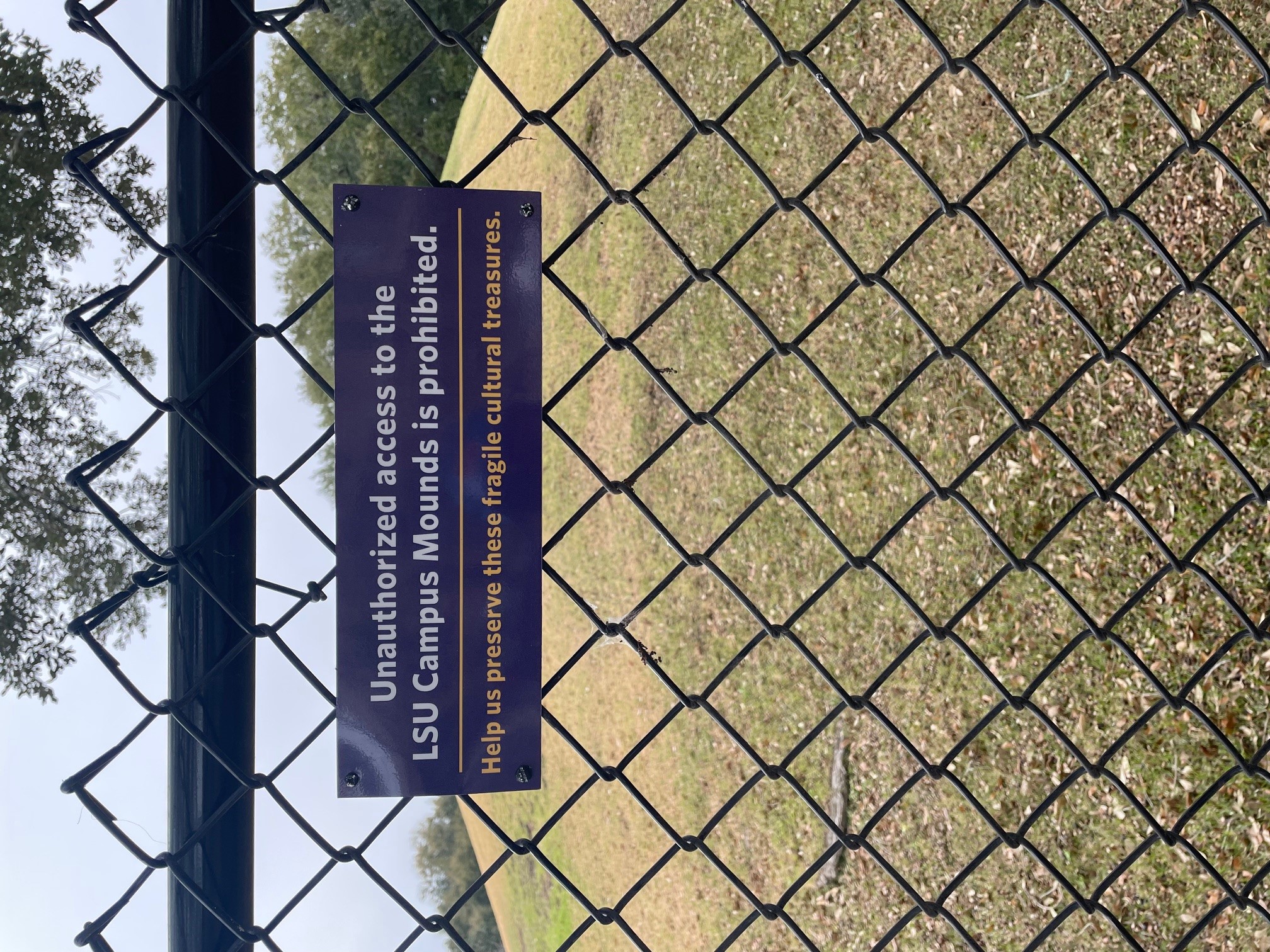
New Signage Installed
In late 2023, LSU’s Student Government and the Committee to Preserve the LSU Campus Mounds agreed to a joint initiative to update signage around the LSU Campus Mounds to reflect their officially recognized name.
With funding from both groups, new signage was installed on the perimeter fence that protects the mounds and in the adjacent parking lot.
The groups agreed to continue their partnership and locate funding to replace all historical signage near the mounds, with a goal of having all signage include the official name, LSU Campus Mounds, used to identify the mounds in the National Register of Historic Places.
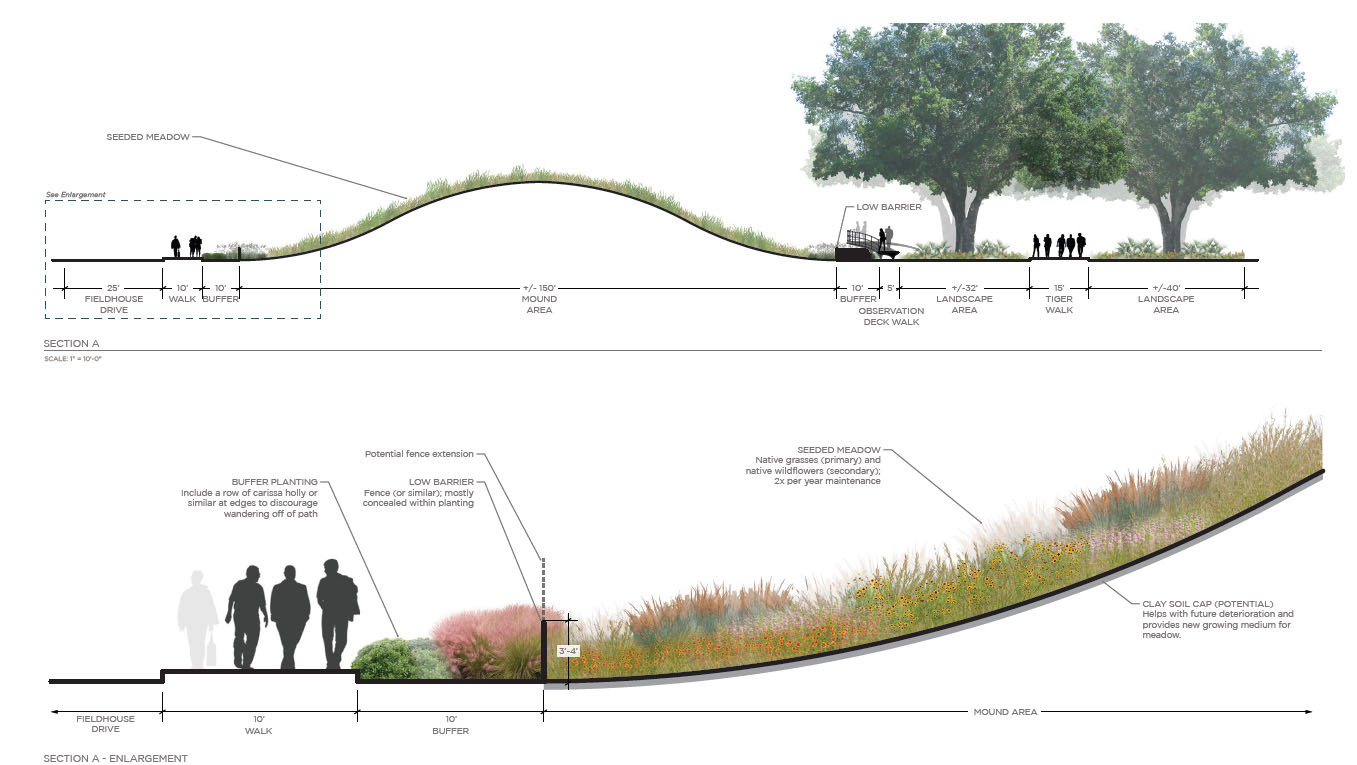
In 2020, a newly formed committee began discussing a new master plan for protecting
and preserving the mounds. The plan consists of three areas: Design, Education, and
Support.
To minimize future disturbance at the mounds and stabilize current deterioration,
the design concept seeks to keep people off the mounds and to increase the buffer
around the mounds for further protection. The plan includes plantings and additional
landscaping to discourage wandering from the pathways, as well as non-intrusive fencing
and an observation deck to allow unencumbered views of the site. The mounds themselves
would get a clay soil cap, topped with native grasses and native wildflowers, minimizing
the need for mowing and other potentially damaging maintenance. The long-term concept
envisions rerouting nearby roads to lower traffic vibrations.
To educate the public on the local and global significance, the plan includes interpretive
presentations around the mounds; a pop-up mini museum for game days and other events;
guided tours; school materials; and more – all with the additional goal of instilling a sense of respect and pride in these
archaeological treasures. The committee is seeking support for these efforts through
grants and fundraising activities and events.
Frequently Asked Questions
Louisiana has an usually large number of mounds and earthworks — more than 800, spanning a wide range of time — believed to be built by the indigenous people of North America. The state’s abundant natural resources, mild climate, and plentiful native plants and animals made it an ideal area for groups to gather and remain in one place, allowing for the time-consuming construction of large earthworks. In addition to the LSU Campus Mounds, other noteworthy mounds in Louisiana include those in West Carroll Parish at the Poverty Point World Heritage Site.
All Native American mounds are special because of the rich history they represent. Among the oldest of the known mounds in the Americas, the LSU Campus Mounds are listed on the National Register of Historic Places. The two mounds, each nearly 20 feet tall, are among the most accessible and viewed mounds in Louisiana. Most other early mound sites in Louisiana are at least partially on private property and protected by landowners.
Climbing and sliding on the mounds damaged the grass and left ruts in the surface of the mounds, leading to erosion. Also, the soil inside the mounds is unstable, and vibrations can cause landslides. Now that science has made us aware of these concerns, we must take steps to preserve these archaeological treasures and limit the factors that may cause damage. The mounds are also thought to have religious and ceremonial significance and should be respected in the same manner as a church or cemetery.
The mounds are listed on the National Register of Historic Places, and they tell the story of the indigenous people of North America. They are considered historically significant and architecturally important and should be preserved. When former Louisiana Governor Huey P. Long chose a new site for LSU’s campus in the early 1900s, the mounds were one of the reasons he chose the current location, because of the culture and interest they would add to the campus.
As the modern steward of this sacred land, LSU takes its responsibility to protect and preserve these cultural treasures seriously. The mounds are historically significant and architecturally important. If we all do our part, these important structures can stand the test of time, stirring the imagination and educating future generations on the region’s complex history. Please help us preserve the LSU Campus Mounds by:
- Learning more about the mounds and their unique value to our campus
- Admiring them from a safe distance, in accordance with posted rules
- Reporting any unauthorized activity that could damage or deface the mounds
- Supporting preservation efforts by making a donation
News and Resources
For Educators: Explore the LSU Campus Mounds and Native American Heritage with Your Students
We invite you and your students to explore the rich history of the LSU Campus Mounds, some of the oldest known human-made structures in North America, right here on LSU's campus! Visiting the Mounds in person can be a wonderful educational experience, and you’ll find informative panels on the fence surrounding them, perfect for sparking conversations about their significance.
To enhance your visit, consider stopping by the LSU Museum of Natural Science in Foster Hall, just a two-minute walk from the Mounds. Our exhibit on Native American peoples of Louisiana offers further insight into the region’s prehistoric cultures. Additionally, we have a free downloadable booklet filled with activities and fun facts about Native American history and mound-building cultures. You can access it here: Download the Louisiana Native Americans Booklet.
For a deeper dive, you can also visit the Department of Geography and Anthropology in Howe-Russell (located near the LSU Quad and the Student Union). The second-floor exhibit features fascinating dioramas and archaeological materials recovered from Louisiana, providing a hands-on look at the state’s archaeological heritage.
For further information about Louisiana archaeology, visit the Louisiana Office of Cultural Development-Division of Archaeology website: Division of Archaeology | Louisiana Office of Cultural Development. You will find a wide array of educational materials under "Discover Archaeology" (here: Discover Archaeology | Division of Archaeology).
Other Resources:
- The "LSU Campus Mounds” essay for teachers.
- "Understanding Prehistoric Louisiana" is at the 4th grade level
- "Archaic Period" is also at the 4th grade level.
We hope you take advantage of these resources and experiences to enrich your students' learning.
Warm regards,
The LSU Campus Mounds Committee
News
- Preserving Culture and Coastlines: LSU Alumna Applies Cutting-Edge Techniques on Mounds, Louisiana Delta (Feb. 5, 2025)
- LSU Awarded National Park Service Grant to Preserve 6,000-Year-Old Campus Mounds (Jan. 14, 2025)
- LSU Awarded $780K from National Academies to Help Louisiana Tribe Protect Coastal Land (Jan. 8, 2024)
- Scientists Advocate for Endangered Louisiana Archaeological Sites to be Included in Coastal Restoration Plans (Jan. 4, 2023)
- Research Findings: LSU Mounds the Oldest Known Human-Made Structures in the Americas (Aug. 19, 2022)
- Reveille: Mounds Committee Drafts Plan for Further Protection, Collaboration with Athletics (Jan. 27, 2022)
- Country Roads Magazine: Unearthing Prehistory, One Shard at at Time (Sept. 21, 2020)
